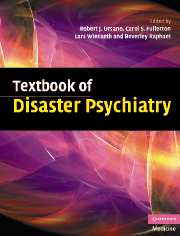1 - Individual and community responses to disasters
from Part I - Introduction
Published online by Cambridge University Press: 09 August 2009
Summary
While most of our work force returned to work soon after the hurricanes many were walking wounded. They were unfocused, spacey, not performing at their usual levels, and performance was inconsistent. I noticed this in other people before I realized that it was happening to me. The feelings and changes lingered longer than I would have thought – for months. The change in the environment – the loss of trees, “blue tarp” roofs, boarded-up houses that stayed boarded-up long after the threat of storms – and living in a dark cluttered home, all seemed to add to my deep sense of lethargy. It all weighed heavily on myself, my family, friends, and co-workers … We didn't do any of the usual summer social get-togethers. The storms didn't just affect us when the wind blew, but changed the landscape of our lives … I remember thinking that my neighborhood looked like an abandoned ghost town. The only neighbors I saw day to day were those who were out walking their dogs. Things are back to normal now, but there is still an edginess to us all I think. I guess now that the repairs are done it's time again to “board-up” and wait for this year's storms.
(Public Health Worker 9 months after five hurricanes had struck Florida in the summer of 2004)In 2005, an estimated 162 million people worldwide were affected by disaster (i.e., natural disasters, industrial and other accidents, and epidemics).
Keywords
- Type
- Chapter
- Information
- Textbook of Disaster Psychiatry , pp. 3 - 26Publisher: Cambridge University PressPrint publication year: 2007
References
- 23
- Cited by



